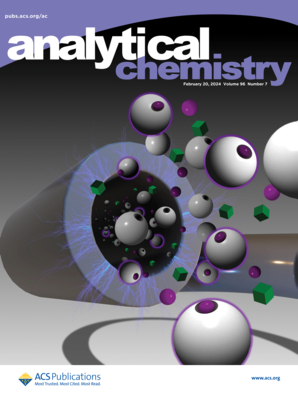Optical Sensing System Based on Bidirectional Self-Correction Technology: An Online Detection Method for Carbon Disulfide and Sulfur Dioxide in Gas-Insulated Switchgear
IF 6.7
1区 化学
Q1 CHEMISTRY, ANALYTICAL
引用次数: 0
Abstract
Carbon disulfide (CS2) and sulfur dioxide (SO2) are typical indicative gases for the early warning and diagnosis of faults in gas-insulated switchgear. In this study, an optical sensing system is reported for online detection of CS2 and SO2 based on a bidirectional self-correction technology (BSCT). First, the differential absorption signals of CS2 and SO2 in the wavelength range of 195–230 nm are obtained using the UV differential optical absorption spectroscopy (UV-DOAS) technique. On this basis, a BSCT is proposed to decouple the spectral lines that exhibit significant overlap. This method primarily employs bidirectional difference spectroscopy to mutually correct the spectra of CS2 and SO2, combined with spectral reconstruction to extract the single-component absorption signals of CS2 and SO2 from the mixed gas spectra. Furthermore, the effectiveness of this novel decoupling technique is validated by comparing the decoupling results with the absorption spectra of single-component standard gases at corresponding concentrations. Finally, the quantitative relationships between the concentrations of target gases (CS2, SO2) and the optical parameters are modeled using the least-squares method. The experimental results show that the mean absolute percentage errors of CS2 (19.00–3735.35 ppb) and SO2 (0.19–38.77 ppm) are 0.543 and 0.521%, respectively. At an effective optical range of 50 cm, the system achieves the lowest detection limits of 0.5 ppb for CS2 and 12 ppb for SO2, representing the best results reported to date for the online detection of CS2 and SO2 in the ppb-ppm range.

求助全文
约1分钟内获得全文
求助全文
来源期刊

Analytical Chemistry
化学-分析化学
CiteScore
12.10
自引率
12.20%
发文量
1949
审稿时长
1.4 months
期刊介绍:
Analytical Chemistry, a peer-reviewed research journal, focuses on disseminating new and original knowledge across all branches of analytical chemistry. Fundamental articles may explore general principles of chemical measurement science and need not directly address existing or potential analytical methodology. They can be entirely theoretical or report experimental results. Contributions may cover various phases of analytical operations, including sampling, bioanalysis, electrochemistry, mass spectrometry, microscale and nanoscale systems, environmental analysis, separations, spectroscopy, chemical reactions and selectivity, instrumentation, imaging, surface analysis, and data processing. Papers discussing known analytical methods should present a significant, original application of the method, a notable improvement, or results on an important analyte.
 求助内容:
求助内容: 应助结果提醒方式:
应助结果提醒方式:


